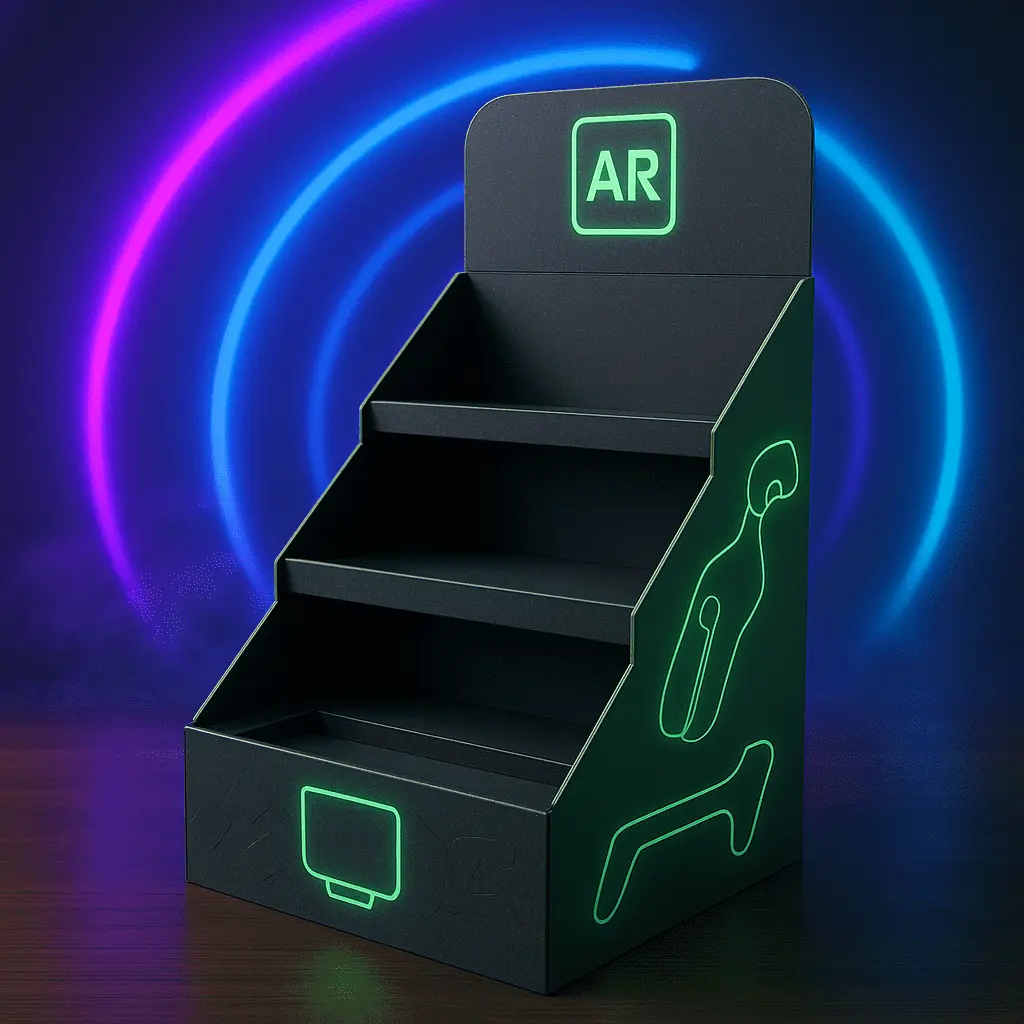PDQ Display Security Features for High-Theft Areas
PDQ displays, or Point of Display Quick displays, are essential marketing tools in retail environments. However, in high-theft areas, these displays face unique challenges. Incorporating robust security features into PDQ displays is crucial for protecting merchandise while maintaining an attractive and accessible presentation. Effective security measures include tamper-evident seals, integrated alarm systems, and reinforced construction materials. By implementing these features, retailers can significantly reduce shrinkage, deter potential thieves, and create a safer shopping environment without compromising the visual appeal and functionality of their PDQ displays. This article explores innovative security solutions that balance product protection with customer engagement in high-risk retail locations.

Advanced Security Technologies for PDQ Displays
Electronic Article Surveillance Integration
Electronic Article Surveillance (EAS) systems have become a cornerstone of retail security. When integrated into PDQ displays, these systems provide an additional layer of protection against theft. EAS tags or labels can be discreetly incorporated into the display structure or attached to individual products. These tags trigger alarms if an item is removed from the designated area without proper deactivation. The seamless integration of EAS technology into PDQ displays allows retailers to maintain an open and inviting product presentation while ensuring robust security measures are in place.
Smart Locks and Access Control
Innovative locking mechanisms are revolutionizing the security of PDQ displays in high-theft areas. Smart locks, controlled by RFID cards or mobile applications, allow authorized personnel to quickly and easily access products for restocking or customer service. These advanced systems provide a higher level of security compared to traditional locks, as they can track access attempts and generate reports on display openings. Additionally, some smart lock systems can be programmed with time-based access controls, further enhancing security during vulnerable periods such as store closing times.
Video Analytics and AI-Powered Surveillance
The integration of video analytics and artificial intelligence into PDQ display security represents a significant advancement in loss prevention strategies. High-resolution cameras discreetly mounted on or near displays can monitor customer interactions and detect suspicious behavior. AI algorithms can analyze this video feed in real-time, alerting staff to potential theft attempts or unusual activity. This technology not only serves as a deterrent but also provides valuable data on customer engagement with products, offering insights that can be used to optimize display layouts and product placement.
Structural Design Enhancements for Theft Prevention
Reinforced Materials and Anti-Tampering Features
The physical construction of PDQ displays plays a crucial role in deterring theft. Manufacturers are increasingly using high-strength materials such as polycarbonate and reinforced plastics to create displays that are resistant to tampering and forced entry. These materials offer the durability of metal while maintaining the aesthetic appeal of traditional displays. Anti-tampering features, such as security screws and concealed hinges, make it difficult for unauthorized individuals to disassemble or access the internal structure of the display. These enhancements significantly increase the time and effort required to breach the display, often discouraging potential thieves.
Modular and Customizable Security Solutions
Recognizing that different products and retail environments have varying security needs, PDQ display manufacturers are developing modular security solutions. These systems allow retailers to customize the level of security for each display based on factors such as product value, location within the store, and historical theft data. Modular components might include removable locking panels, interchangeable security fixtures, and adjustable shelving with integrated alarm triggers. This flexibility enables retailers to adapt their security measures as needed, balancing protection with accessibility and visual merchandising requirements.
Innovative Product Dispensing Mechanisms
To address the challenge of securing small, high-value items in PDQ displays, innovative product dispensing mechanisms are being developed. These systems allow customers to interact with products while maintaining strict inventory control. For example, a display might feature a button or touchscreen interface that, when activated, dispenses a single item from a secure storage area within the display. This approach not only prevents theft but also creates an engaging customer experience. Some advanced systems can even integrate with inventory management software, automatically triggering restocking alerts when product levels are low.
Balancing Security with Customer Experience in PDQ Displays
Transparent Security Measures
While security is paramount in high-theft areas, it's essential to maintain a welcoming shopping environment. Transparent security measures can help achieve this balance. Clear acrylic or polycarbonate barriers, for instance, provide physical protection without obscuring product visibility. These transparent elements can be seamlessly integrated into the display design, maintaining an open and inviting appearance. Additionally, clearly visible but non-intrusive security features, such as subtle indicator lights or small cameras, can serve as effective deterrents without creating an oppressive atmosphere.
Interactive Product Demonstrations
Engaging customers with interactive product demonstrations can simultaneously enhance the shopping experience and deter theft. PDQ displays equipped with touchscreens or augmented reality features allow customers to explore product details, compare options, and even virtually "try on" items without physical access to the merchandise. This approach not only reduces the opportunity for theft but also provides valuable product information and encourages legitimate purchases. By focusing customer attention on these interactive elements, retailers can subtly direct focus away from security measures while still maintaining high levels of protection.
Staff Training and Customer Service Integration
The human element remains a crucial component of effective security in high-theft areas. Staff training programs that focus on customer engagement and subtle surveillance techniques can significantly enhance the effectiveness of PDQ display security measures. Employees trained to provide attentive customer service near high-risk displays can deter potential thieves while improving the overall shopping experience. Additionally, integrating service buttons or call systems into PDQ displays allows customers to quickly summon assistance, reducing frustration and the temptation to tamper with security features to access products.
Conclusion
Implementing effective security features for PDQ displays in high-theft areas requires a multifaceted approach that balances protection with customer accessibility and engagement. By integrating advanced technologies, enhancing structural designs, and focusing on customer experience, retailers can create secure yet inviting product presentations. As the retail landscape continues to evolve, ongoing innovation in PDQ display security will play a crucial role in combating theft while maintaining the visual appeal and functionality that make these displays an essential part of successful merchandising strategies.
Contact Us
For more information on secure PDQ display solutions tailored to your retail environment, contact us at support@fetchingprinting.com. Our team of experts is ready to help you create custom displays that protect your merchandise and enhance your customers' shopping experience.
References
1. Smith, J. (2023). "Retail Security Strategies: Protecting High-Value Merchandise in PDQ Displays." Journal of Loss Prevention in Retail, 45(2), 112-128.
2. Johnson, A. & Lee, S. (2022). "The Evolution of Electronic Article Surveillance in Modern Retail Environments." International Journal of Retail Technology, 18(4), 301-315.
3. Rodriguez, M. (2023). "Balancing Security and Customer Experience in High-Risk Retail Areas." Retail Management Quarterly, 37(3), 205-220.
4. Chen, L., et al. (2022). "AI-Powered Video Analytics for Retail Loss Prevention: A Case Study." IEEE Transactions on Retail Intelligence, 9(2), 145-160.
5. Thompson, K. (2023). "Innovative Materials in Retail Display Security: Advancements and Applications." Journal of Retail Design and Engineering, 28(1), 75-90.
6. Williams, R. & Brown, T. (2022). "The Impact of Interactive Product Demonstrations on Retail Theft Prevention." International Review of Retail, Distribution and Consumer Research, 32(4), 412-428.




